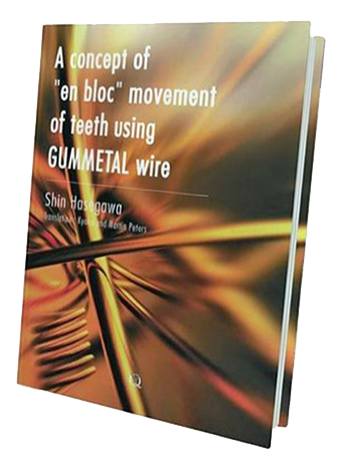
No Energy Loss
The difference between loading force and unloading force is known as hysteresis. The red curves illustrate the behavior of NiTi, a shape memory alloy, which lacks an elastic limit and doesn't undergo permanent deformation. Despite always returning to its original shape, NiTi exhibits hysteresis.
In contrast, GUMMETAL wire displays 'True Elasticity' within its elastic limit, setting it apart from Ni-Ti wire, which only demonstrates Pseudo-Elasticity. This distinction results in hysteresis and subsequent 'energy loss.'
In orthodontic applications, the upper red curve represents the loading force, while the lower red curve represents the unloading force. When clinicians bend wires for individual patients, they must anticipate the amount of unloading force required to move the teeth. Ni-Ti wires, characterized by hysteresis, offer imprecise unloading force predictions. However, GUMMETAL's absence of hysteresis ensures greater precision in orthodontic force and facilitates clinician work.
NO hysteresis = NO energy loss.
For detailed instructions, please refer to Dr. Shin Hasegawa's book.
A Concept of
En Bloc Movement
of Teeth Using GUMMETAL Wire
Author: Dr. Hasegawa
The Concept of En Bloc Movement of Teeth Using GUMMETAL Wire" book presents a comprehensive guide to revolutionize orthodontic treatment techniques. Authored by leading experts in the field, it explores innovative approaches to dental alignment through the utilization of GUMMETAL wire. This essential resource provides step-by-step instructions and case studies, empowering orthodontists to achieve superior results in dental realignment.


